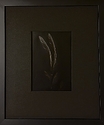When I do this, I use 6 measuring graduates - three on each side of the rotary agitator. I use Cibachrome tubes, and I have enough of them that there is time for them to air dry between uses.
I mix up something like 600 ml of each of Polymax-T (which most likely performs similarly to Dektol), indicator stop bath, and Kodak Rapid Fixer.
I track usage as I go.
For each solution, I use 100 ml per print. I fill from the graduates on the left, and after each print I empty into the graduates on the right (I'm left handed). When the graduates on the left are empty, and the graduates on the right are filled, I switch them.
I track usage, and replace the chemicals when I am about 2/3 of the way through the Kodak recommended capacity, although I'm happy to rely on the indicator when it comes to the stop bath.
I make a point of using developing times and fixing times that are at the higher end of the range. That tends to even out the effects of developer exhaustion.










